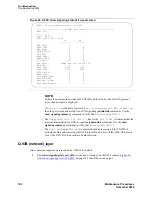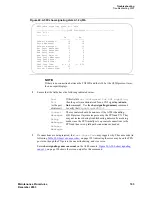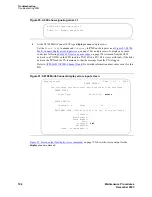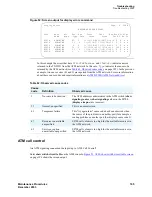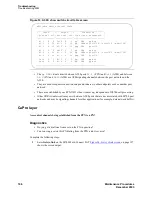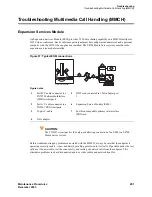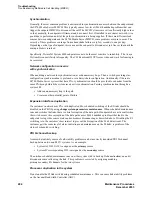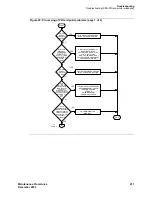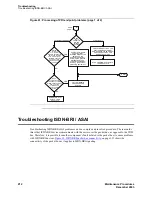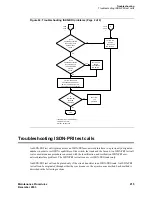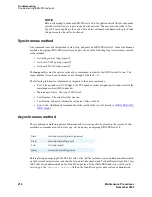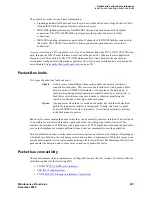
Troubleshooting
Troubleshooting Multimedia Call Handling (MMCH)
206
Maintenance Procedures
December 2003
Solution
If the audio is not muffled:
1
Use the status conference command to determine which port on the TN788B (VC board) is
connected to this endpoint.
2
Check the VC (TN788B) board using the test board xxyy long command.
3
Drop the call.
4
Find another available port, then:
a
Busyout the port to which the endpoint was connected.
b
Make another call to the same conference. If the problem corrects itself, then the previous
port may be bad. If there are other VC boards with sufficient available ports to replace
calls on the current VC, then pull the board that has the bad endpoint on it (the status
conference command displays the encoder port associated with the call). The system will
automatically reestablish the VC connections without dropping the call. If this fixes the
problem, then replace the board, as it has at least one bad port. Reseating the board may
temporarily fix the problem due to the hard reset done to the board.
Audio echo
Echo in conference calls, particularly those with large delay characteristics, is totally disruptive. When
Voice Activated Switching is taken into account, the effects are disastrous. Various arrangements of the
microphone(s) and room speaker(s) might be needed.
Table 63, Audio echo troubleshooting,
details two common audio echo problems and suggested actions to resolve them.
Normally, if any microphone in the room is moved relative to the speakers, that site will cause echo until
the echo canceller in the codec retrains itself. Some will require a manual reset.
If a PictureTel keypad is configured with external microphones connected to the keypad, then the internal
microphone and external microphone(s) “sing” to each other if the “ext mic” bat switch is set to “int mic”
on the back of the keypad. In this configuration, VAS locked on that site, and the acoustic “singing” was
inaudible.
Rate adaptation
Because of a lack of a clear explanation in standards, sometimes endpoints do not work well with each
other and the S8700 Media Server MMCH. The MMCH will only allow a conference to downgrade from
64- to 56-kbps operation on conferences that have the
Rate Adaptation
flag set to
y
.
Table 63: Audio echo troubleshooting
Situation
Problem
Action
For some Avaya Vistium
endpoints, an external speaker may
be attached or was attached when
the system was last rebooted
Endpoint causes audio
echo throughout the
conference
Isolate the offending endpoint by
asking each endpoint to mute, one
at a time, until the echo
disappears.
Input from an endpoint is too near
an endpoint’s speakers
Acoustic echo is created
Move the microphone away from
the speakers.
Summary of Contents for CMC1
Page 1: ...Maintenance Procedures 555 245 103 Issue 1 1 December 2003 ...
Page 14: ...Contents 14 Maintenance Procedures December 2003 ...
Page 416: ...Additional maintenance procedures IP Telephones 416 Maintenance Procedures December 2003 ...
Page 426: ...Index X 426 Maintenance Procedures December 2003 ...

